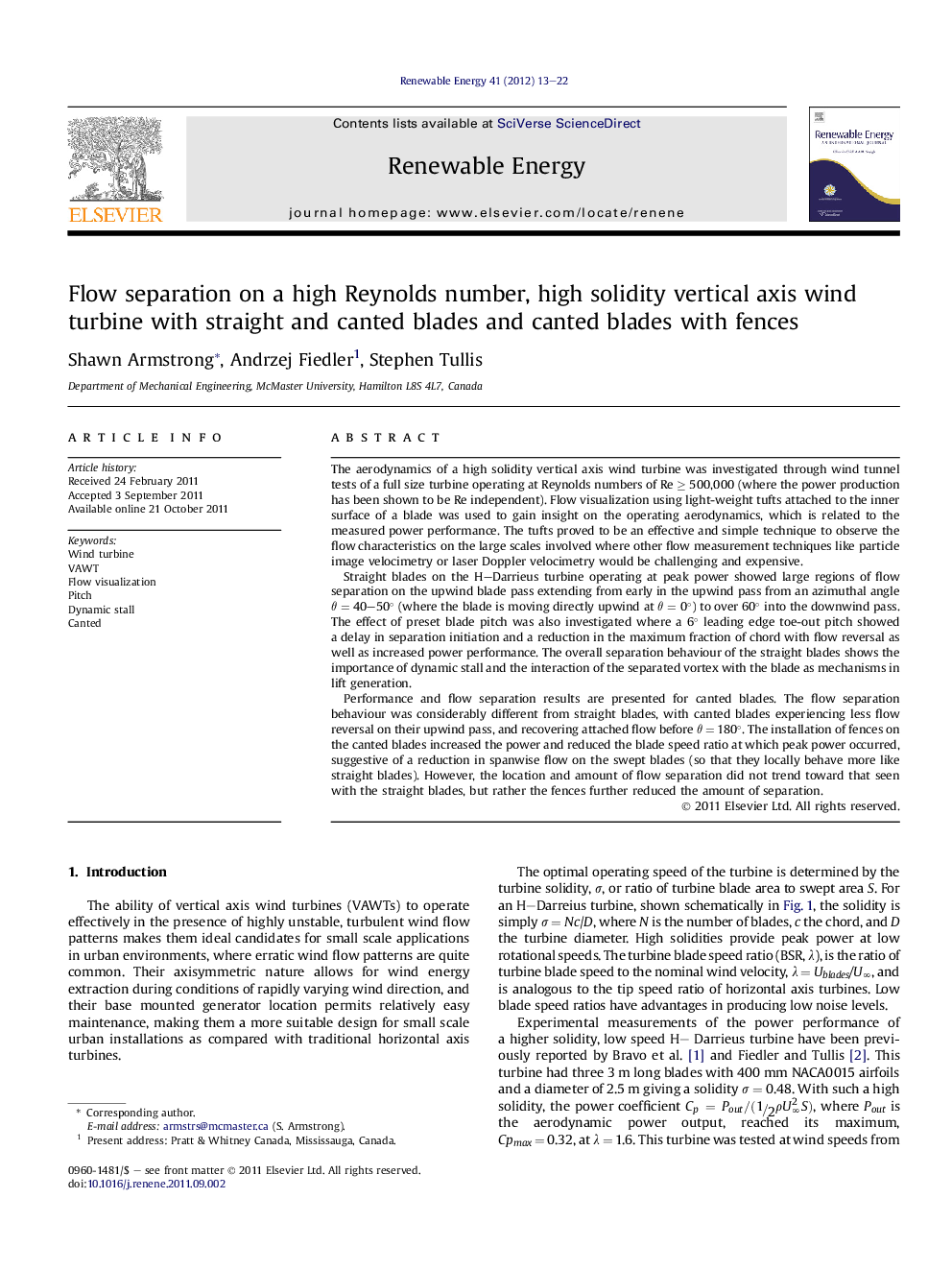| Article ID | Journal | Published Year | Pages | File Type |
|---|---|---|---|---|
| 301092 | Renewable Energy | 2012 | 10 Pages |
The aerodynamics of a high solidity vertical axis wind turbine was investigated through wind tunnel tests of a full size turbine operating at Reynolds numbers of Re ≥ 500,000 (where the power production has been shown to be Re independent). Flow visualization using light-weight tufts attached to the inner surface of a blade was used to gain insight on the operating aerodynamics, which is related to the measured power performance. The tufts proved to be an effective and simple technique to observe the flow characteristics on the large scales involved where other flow measurement techniques like particle image velocimetry or laser Doppler velocimetry would be challenging and expensive.Straight blades on the H–Darrieus turbine operating at peak power showed large regions of flow separation on the upwind blade pass extending from early in the upwind pass from an azimuthal angle θ = 40–50° (where the blade is moving directly upwind at θ = 0°) to over 60° into the downwind pass. The effect of preset blade pitch was also investigated where a 6° leading edge toe-out pitch showed a delay in separation initiation and a reduction in the maximum fraction of chord with flow reversal as well as increased power performance. The overall separation behaviour of the straight blades shows the importance of dynamic stall and the interaction of the separated vortex with the blade as mechanisms in lift generation.Performance and flow separation results are presented for canted blades. The flow separation behaviour was considerably different from straight blades, with canted blades experiencing less flow reversal on their upwind pass, and recovering attached flow before θ = 180°. The installation of fences on the canted blades increased the power and reduced the blade speed ratio at which peak power occurred, suggestive of a reduction in spanwise flow on the swept blades (so that they locally behave more like straight blades). However, the location and amount of flow separation did not trend toward that seen with the straight blades, but rather the fences further reduced the amount of separation.
► Flow visualisation tuft data from inner blade surface for high Reynolds number straight blades. ► Comparison of visualisation with published literature on flow structures. ► Flow patterns on blades of a high solidity VAWT and their variation with turbine power performance. ► Comparison of the flow pattern changes with modification of blade pitch. ► Comparison of the flow patterns on a straight blade, a canted blade and a canted blade with fences.
